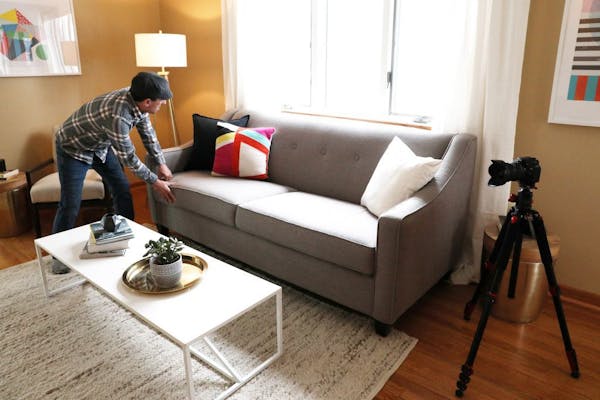Dustin Delmonico and his wife recently decided to trade up to a bigger house for their growing family. But after a few calculations, they realized they could build a house for not much more than they would pay for an existing one.
"The price gap is minimal for what we wanted," Delmonico said, "and I don't have to worry about replacing a roof or fixing an appliance."
A shortage of house listings and an increase in bidding wars have been a boon for Twin Cities homebuilders this spring. More single-family building permits were issued last month than in any May in at least a dozen years.
It's another indicator of a housing market that is extremely unbalanced, with demand far outweighing supply for Twin Cities homes that are around or below the median price. But it's also a sign that at least one countervailing force — new construction — is starting to move the market back in the direction of equilibrium.
Last month, 665 single-family permits were issued in the metro area, 30 percent more than last year and the most since 2006.
"We're pleased to see single-family construction take off," said Tom Wiener, president of Housing First Minnesota.
That rebound comes in the midst of a challenging recovery for companies that sell new houses. Rising construction costs, including higher land prices and a shortage of skilled labor, have made new houses unaffordable for many would-be home buyers.
But with prices of existing houses increasing at breakneck speed, buyers in some areas are realizing that by some measures a new house isn't that much more expensive than an existing one.
Last month, the average price per square foot of a new house in the metro was $166, about 18 percent more than an existing one, according to the Minneapolis Area Association of Realtors. In 2012, the price gap per square foot between new and existing houses peaked at 31.3 percent.
That gap has slowly narrowed largely because existing home prices are rising swiftly. For Twin Cities homebuilders, that's encouraging.
"With the lack of inventory in the housing market, we believe this is a trend that will continue," Wiener said.
Mark Gianopulos, Midwest region director for Metrostudy, said the Twin Cities had the highest level of annual single-family permits of any urban area in the Midwest during the first quarter of the year. "The housing market in the Twin Cities continues to show unbridled strength even with the recent modest economic factors," Gianopulos said.
He said the median closing price for a new single-family detached home in the Twin Cities is the highest in the Midwest at $416,960. However, as builders try to cater to buyers on a budget, they are trying to control costs by cutting back on size and amenities. Since the second quarter of 2015, the median price of those new houses has remained relatively flat.
Though builders are increasing production, there are no signs of overbuilding. At the end of April, the number of newly built single-family houses listed for sale through the Multiple Listing Service was steady at nearly 1,900. At the same time, there were only 5,229 existing single-family houses on the market, 31 percent fewer than last year.
That decline has been stifling overall residential sales this year. During April, buyers signed 3.6 percent fewer contracts to buy existing single-family houses. In contrast, deals for new single-family houses rose 7.4 percent.
New houses now represent a much-higher share of all home sales in the metro. During April, there was a 11.9 percent increase in new home sales, the biggest sales gain of any housing type.
A late spring has also had an effect on the market, possibly by making the recent increase smaller than it would have been under warmer conditions.
"It's clear that the long winter had an impact on new single-family construction," said David Siegel, executive director of Housing First Minnesota. "We need to see more of this level of homebuilding activity in order to balance out the market."
Since the recession, developers have focused on rental apartments, which, until last month, have represented more than half of all planned units in the metro.
But with house listings near an all-time low and prices reaching a fever pitch, homebuilders can't keep pace with demand. That's especially true when it comes to houses that are affordable to first-time buyers and move-up millennials like Delmonico and his wife, Megan. They have a 7-month-old baby and wanted more space in a desirable suburb.
They are building a four-bedroom, four-bathroom house in Inver Grove Heights. Delmonico said that it was clear from the start of their house hunt that, even though they're not competing with first-time buyers, they had much better options after deciding to buy new. The couple had to give up some of the things they might have gotten in an existing home, such as an irrigation system, finished basement or fenced backyard. But they said they plan to invest about $50,000 in the house over the next few years.
"It is fair to say existing houses usually need a little work, so why not put that money into a new home instead and get exactly what we wanted?" Delmonico said. "So, in a way, a new home, as long as it's built well, gives you peace of mind."
Jim Buchta • 612-673-7376

